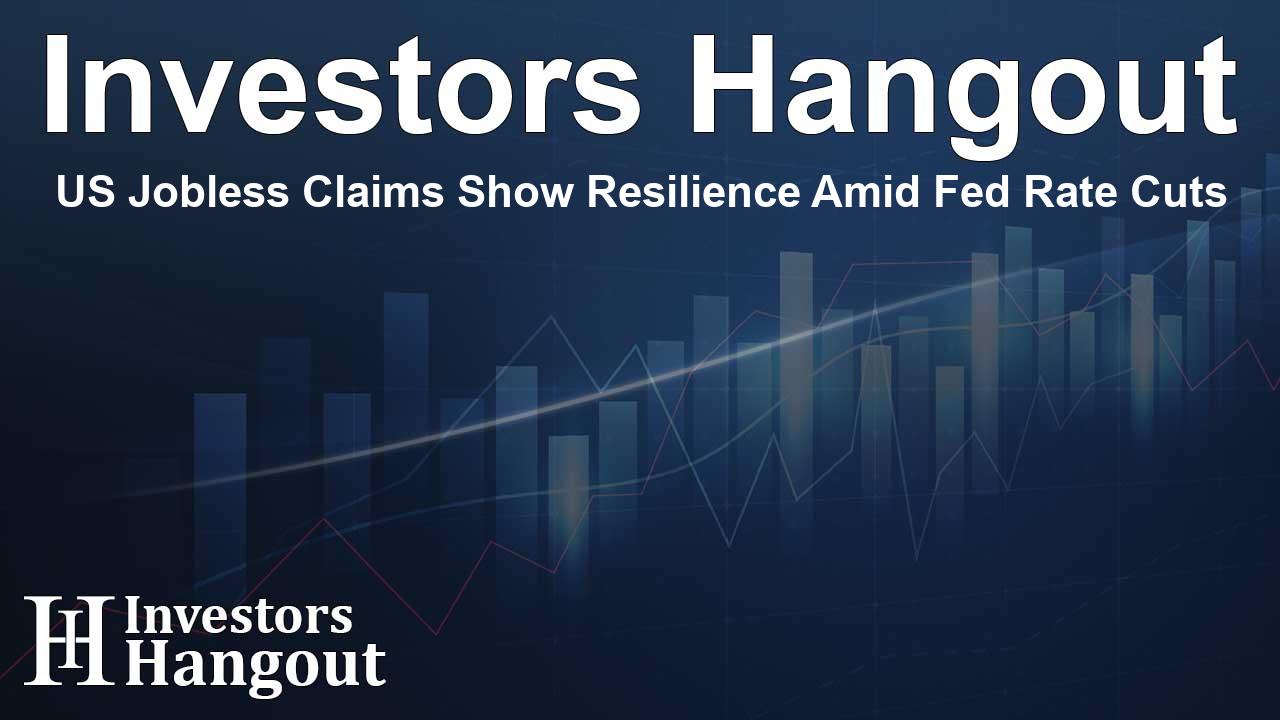US Jobless Claims Show Resilience Amid Fed Rate Cuts

Positive Trends in Unemployment Claims Data
The latest reports show that the number of Americans filing for initial unemployment benefits rose to 219,000, which is actually less than expected. Despite a slight increase, this figure emphasizes the ongoing stability in the U.S. labor market, especially following the Federal Reserve's decision to lower interest rates for the first time in over four years.
Understanding Initial Jobless Claims
The reported initial jobless claims for the week ended on September 14 highlight a minor increase from an upwardly revised 231,000 in the previous week. Experts had anticipated a consensus figure set at 230,000, making the actual rise a relatively positive indication in light of fluctuating economic conditions.
Continuing Claims Showcase Further Stability
In addition to initial claims, the continuing claims data also provides insight into the overall health of the job market. This number fell by 14,000 to a seasonally adjusted total of 1.829 million, suggesting that many individuals are successfully transitioning back into employment after initial claims.
Federal Reserve's Rate Cuts and Market Reactions
The decision by the U.S. central bank to initiate its new rate-cutting cycle has significant implications for the economy. By reducing interest rates for the first time since March 2020, the Fed has indicated a desire to support economic growth amid various pressures. The new interest rate range is set between 4.75% and 5%.
Fed Chair's Remarks on Economic Balance
Federal Reserve Chair Jerome Powell has commented on the balance of risks between inflation pressures and labor market conditions. He noted that the current landscape suggests a cautious but optimistic outlook, with the Fed likely considering additional cuts if labor market instability continues.
Future Projections and Analyst Predictions
Market analysts are watching closely for signs of change. Currently, there is a 67% probability that the Fed will lower interest rates by an additional 25 basis points during their upcoming meeting in November, based on analysis from the CME Group's FedWatch tool. This highlights the market’s expectation for potential further easing of monetary policy.
Anticipating Labor Market Dynamics
JPMorgan analysts have provided insights suggesting that continued softening in labor markets could prompt more substantial cuts in interest rates. They are projecting a 50 basis point cut contingent on the results of forthcoming jobs reports. Should labor data improve, the Fed might adopt a more gradual easing approach, effectively moving back towards a neutral rate sooner than anticipated.
Conclusion: Navigating Economic Uncertainties
As the economy navigates these uncertainties, understanding the dynamics of jobless claims and Federal Reserve policy becomes crucial for assessing future trends. The evolving situations in labor markets and economic indicators will likely continue to influence both fiscal and monetary policy decisions moving forward.
Frequently Asked Questions
What are initial jobless claims?
Initial jobless claims represent the number of individuals filing for unemployment benefits for the first time and serve as a key indicator of labor market health.
What does a rise in jobless claims indicate?
A rise in jobless claims can suggest potential weakness in the labor market, but it can also occur for various reasons that might not indicate a long-term trend.
How does the Federal Reserve influence jobless claims?
The Federal Reserve's monetary policy, including interest rate adjustments, impacts economic conditions that can affect employment levels and, subsequently, jobless claims.
What does continuing claims data signify?
Continuing claims data reflects the number of individuals who are still receiving unemployment benefits after their initial claims, indicating ongoing challenges in finding work.
What might future jobless claims trends look like?
Future jobless claims will depend on upcoming economic conditions, labor market trends, and Federal Reserve policy decisions that aim to support economic stability.
About Investors Hangout
Investors Hangout is a leading online stock forum for financial discussion and learning, offering a wide range of free tools and resources. It draws in traders of all levels, who exchange market knowledge, investigate trading tactics, and keep an eye on industry developments in real time. Featuring financial articles, stock message boards, quotes, charts, company profiles, and live news updates. Through cooperative learning and a wealth of informational resources, it helps users from novices creating their first portfolios to experts honing their techniques. Join Investors Hangout today: https://investorshangout.com/
Disclaimer: The content of this article is solely for general informational purposes only; it does not represent legal, financial, or investment advice. Investors Hangout does not offer financial advice; the author is not a licensed financial advisor. Consult a qualified advisor before making any financial or investment decisions based on this article. The author's interpretation of publicly available data shapes the opinions presented here; as a result, they should not be taken as advice to purchase, sell, or hold any securities mentioned or any other investments. The author does not guarantee the accuracy, completeness, or timeliness of any material, providing it "as is." Information and market conditions may change; past performance is not indicative of future outcomes. If any of the material offered here is inaccurate, please contact us for corrections.